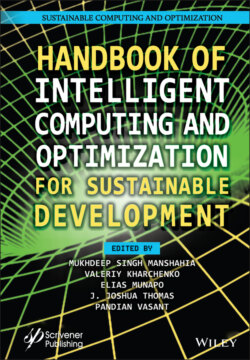Читать книгу Handbook of Intelligent Computing and Optimization for Sustainable Development - Группа авторов - Страница 108
4.6 Cryptographic Applications 4.6.1 Hill Cipher
ОглавлениеIn standard ciphers, based on matrix transformations, such as Hill cipher, “residue matrices” on the plane made of complex numbers may be used to construct non-linear cryptographic transformations. The implementation and the analysis on their mathematical properties are described in the reference [9].
The encryption scheme in Hill Cipher uses a linear matrix transformation to translate plaintext to ciphertext [5]: C = P × K, where P represents “a plaintext matrix”, K represents “a key matrix”, and C represents “a ciphertext matrix”. “A plaintext matrix” is opened by transforming: P = C × K−1, satisfying K × K−1 = I.
“Affine Hill cipher extends the concept of Hill cipher by integrating it with a nonlinear affine transformation” [10]. The encryption scheme follows the nonlinear transformation of matrices: C = (P × K) + E where P represents “a plain-text matrix”, K represents “a key matrix”, E represents “an embedded matrix”, and C represents “a ciphertext matrix”. “A plaintext matrix” is opened by transforming: P = (C – E) × K−1, satisfying K × K−1 = I.
On the plane made of complex numbers, a new design of Hill cipher is created. Matrix transformations, affine transformations, and complex transformations are used to create the current concept. As a result, the cipher’s diffusion and confusion properties are greater than those of the standard Hill cipher applied to real numbers. It has the potential to defend against both “known-plaintext” and “chosen-plaintext attacks”.
The followings are the encryption scheme and the decryption scheme for the new design of Hill cipher applied to the plane made of complex numbers. For practical experiments, the digits “0” to “25” are used to represent the characters “A” to “Z”, respectively, “26” for the space (☐), “27” for the comma, “28” for the question mark, “29” for the apostrophe, and “30” for the full stop. There are 31 elements in total in the field. As a result, the new design is applied to Z(31). The practical experiments resulting in the encryption scheme and the decryption scheme by using the techniques of our system described in the reference [9] are shown in Figures 4.4 and 4.5.
